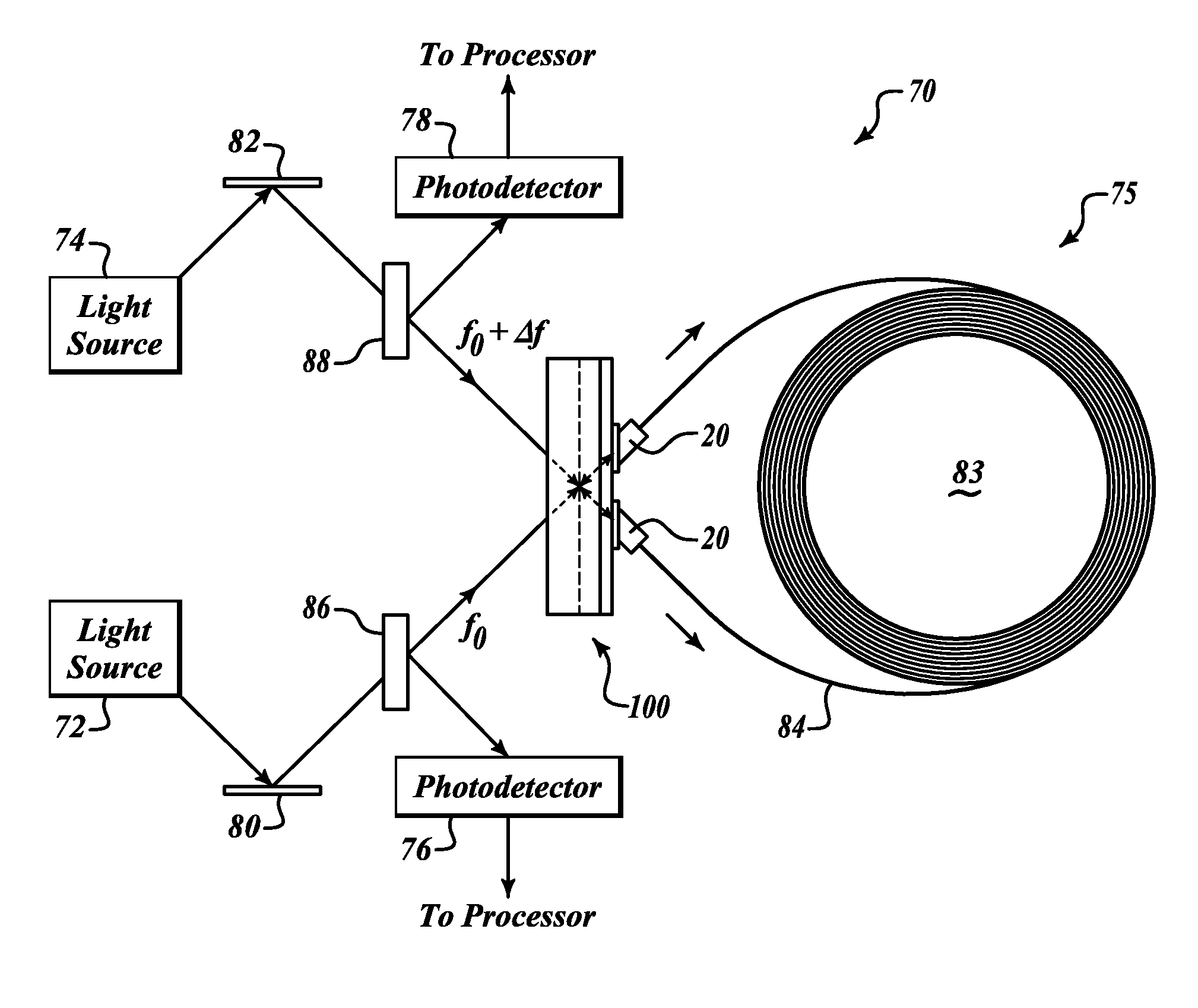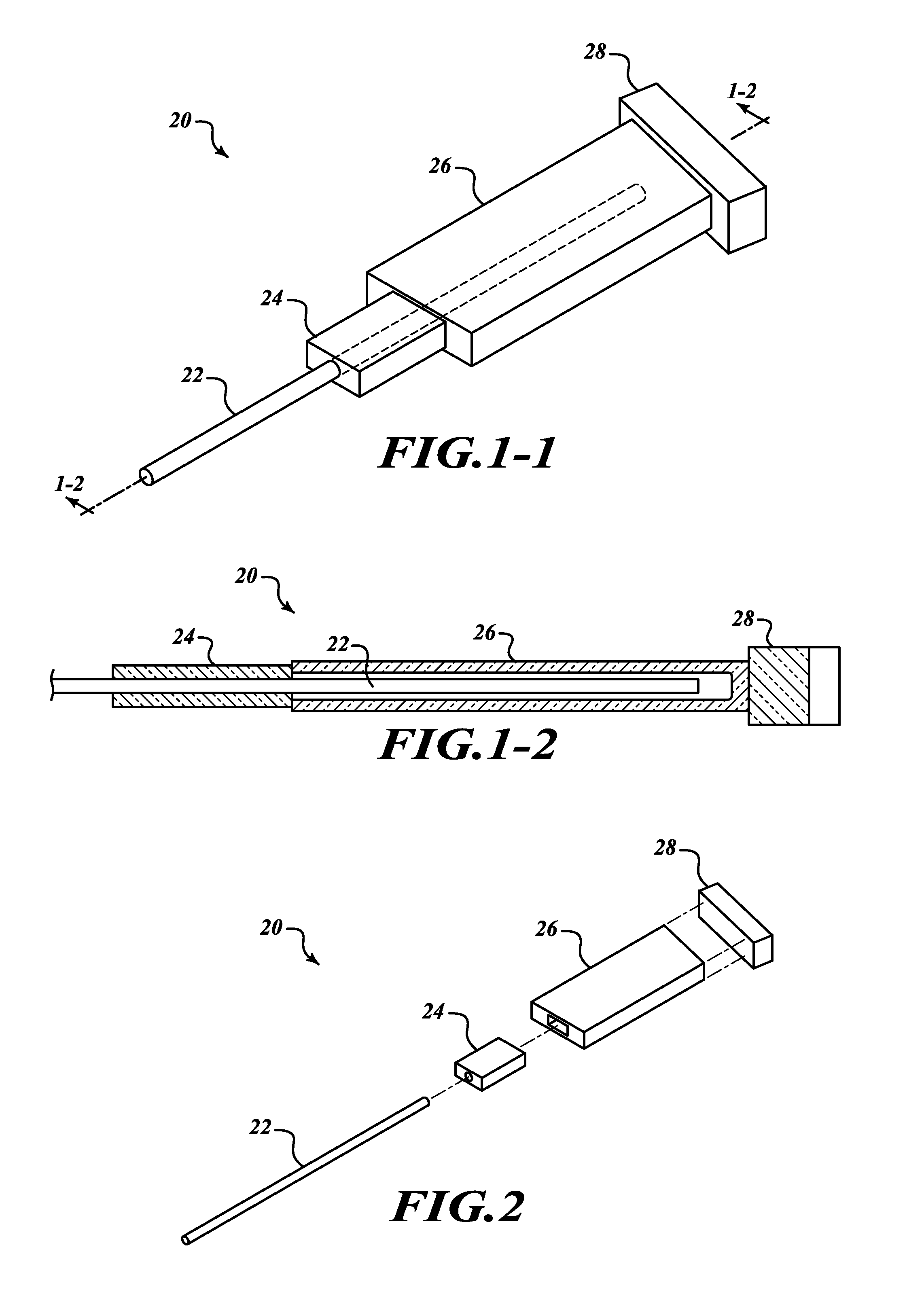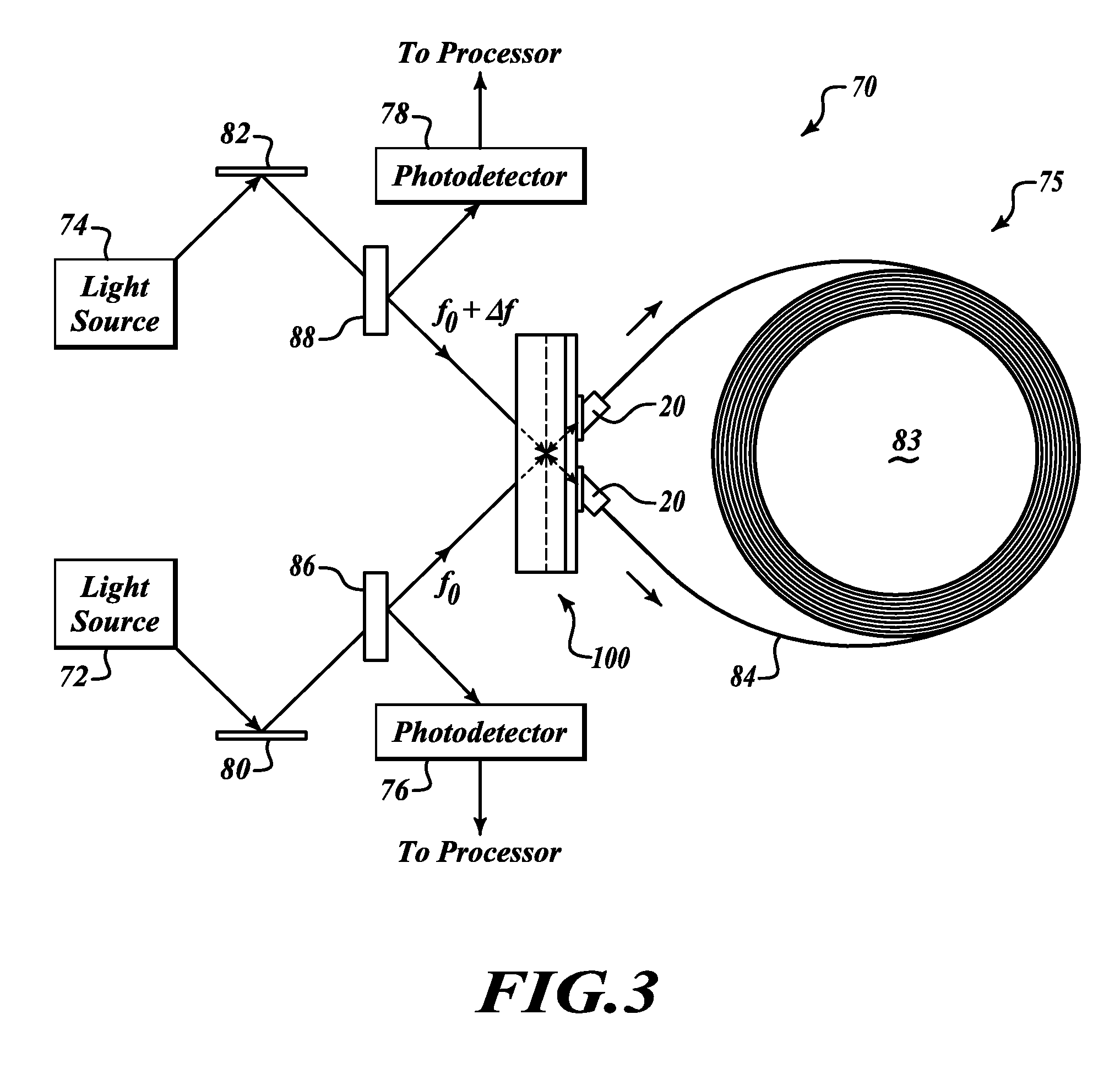Reliable low loss hollow core fiber resonator
a hollow core fiber and low-loss technology, applied in the field of reliable low-loss hollow-core fiber resonators, can solve the problems of reducing the accuracy of the rotation rate detected by the resonator gyro, false indication of rotation or inaccurate measurement of the rotation rate, and achieving the effect of preventing backreflection
- Summary
- Abstract
- Description
- Claims
- Application Information
AI Technical Summary
Benefits of technology
Problems solved by technology
Method used
Image
Examples
Embodiment Construction
[0019]FIGS. 1-1, 1-2 and 2 illustrate various views of a coupling device 20 for attaching an end of a hollow core fiber 22 to optical components included in an interferometric fiber optic gyroscope (IFOG), a resonator fiber optic gyroscope (RFOG), or any other device that would benefit using hollow core fiber, and therefore benefit from reducing the effects that may result with an open-ended hollow core fiber 22.
[0020]The device 20 includes a glass ferrule 24, a sleeve 26, and a glass plate 28. The glass ferrule 24 may also be a glass capillary device. The glass ferrule 24 is attached to a first end of the sleeve 26. A second end of the sleeve 26 is attached to one side of the glass plate 28. Both the sleeve 26 and the ferrule 24 include a hollowed out cavity. The cavity within the sleeve 26 is quite a bit larger than the diameter of the hollow core fiber 22. The sleeve 26 and the ferrule 24 are molded or machined from glass. The ferrule 24, the sleeve 26 and the glass plate 28 are ...
PUM
 Login to View More
Login to View More Abstract
Description
Claims
Application Information
 Login to View More
Login to View More - R&D
- Intellectual Property
- Life Sciences
- Materials
- Tech Scout
- Unparalleled Data Quality
- Higher Quality Content
- 60% Fewer Hallucinations
Browse by: Latest US Patents, China's latest patents, Technical Efficacy Thesaurus, Application Domain, Technology Topic, Popular Technical Reports.
© 2025 PatSnap. All rights reserved.Legal|Privacy policy|Modern Slavery Act Transparency Statement|Sitemap|About US| Contact US: help@patsnap.com



